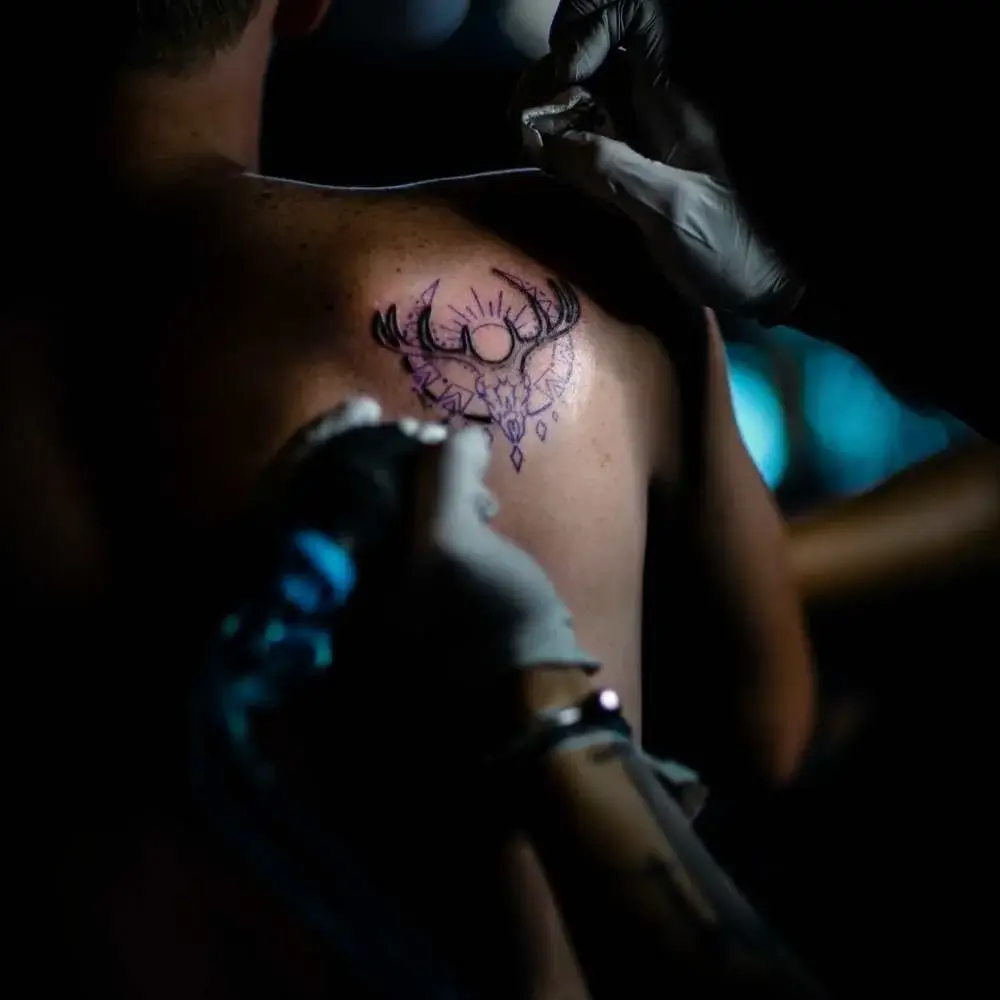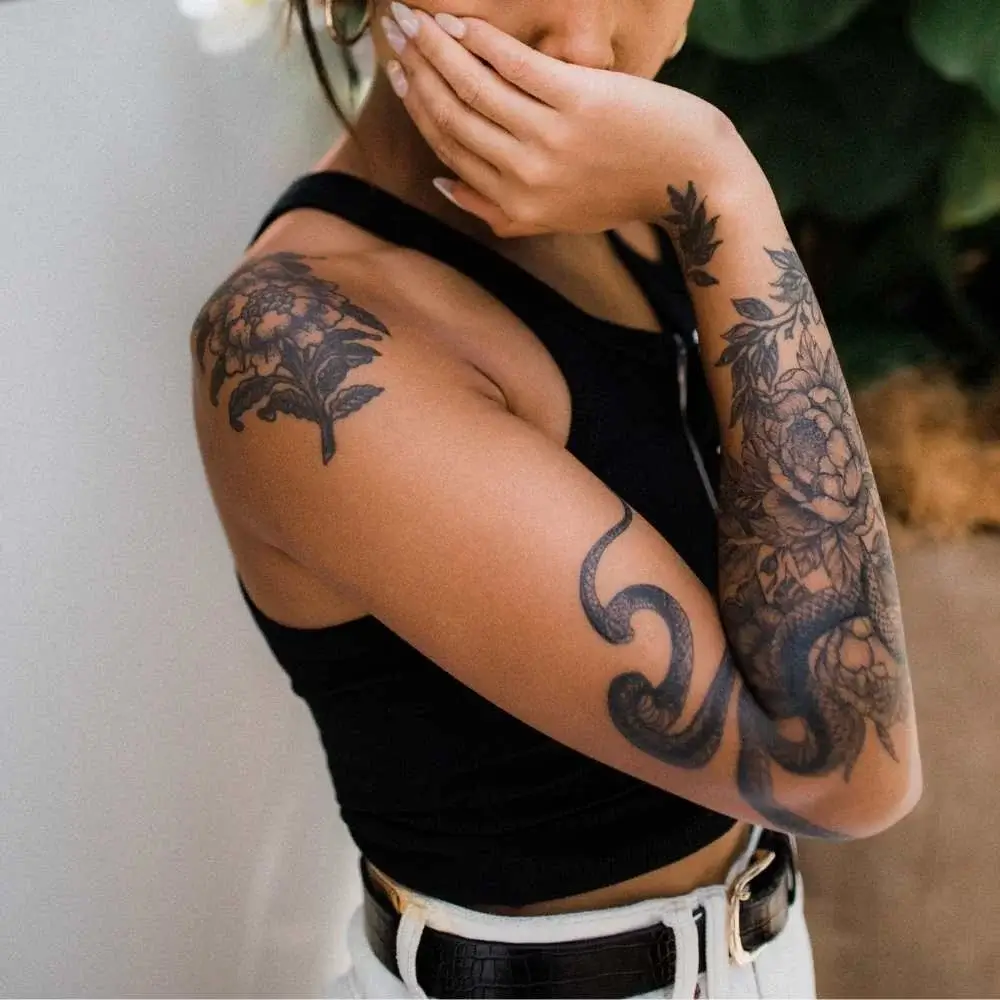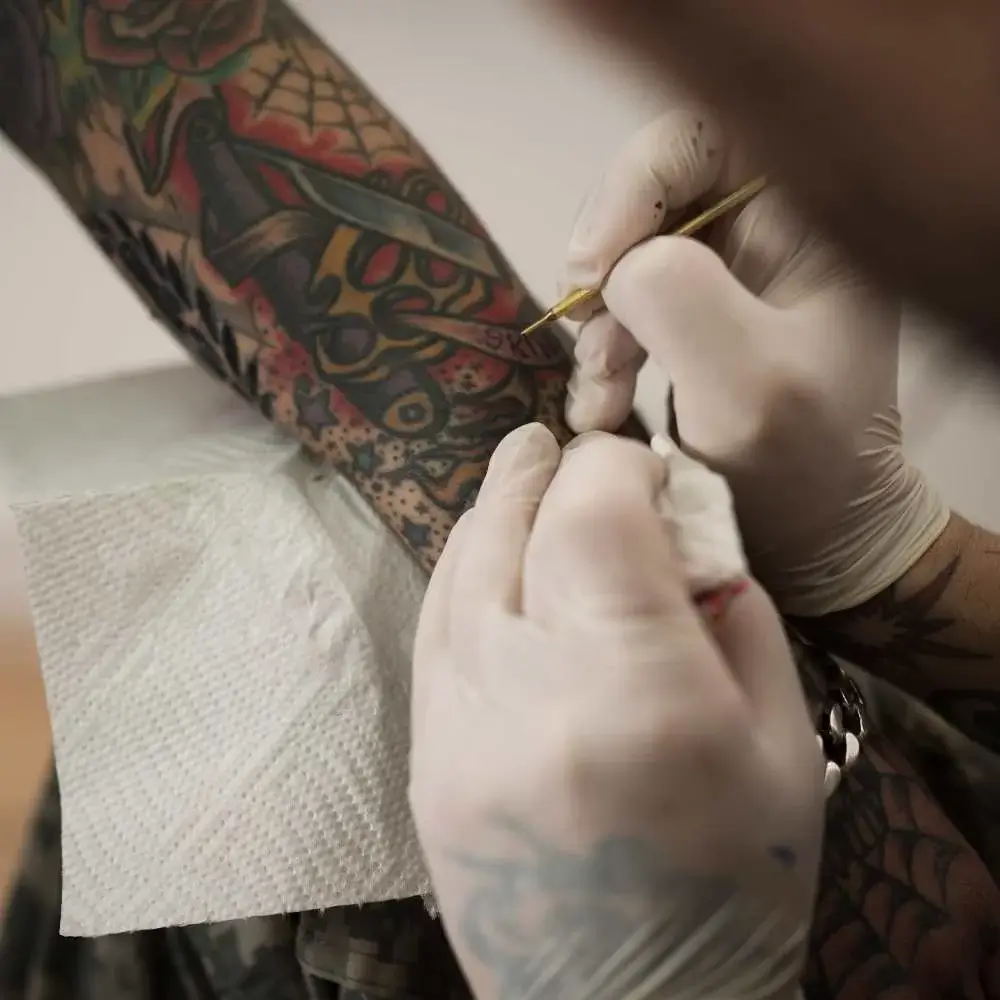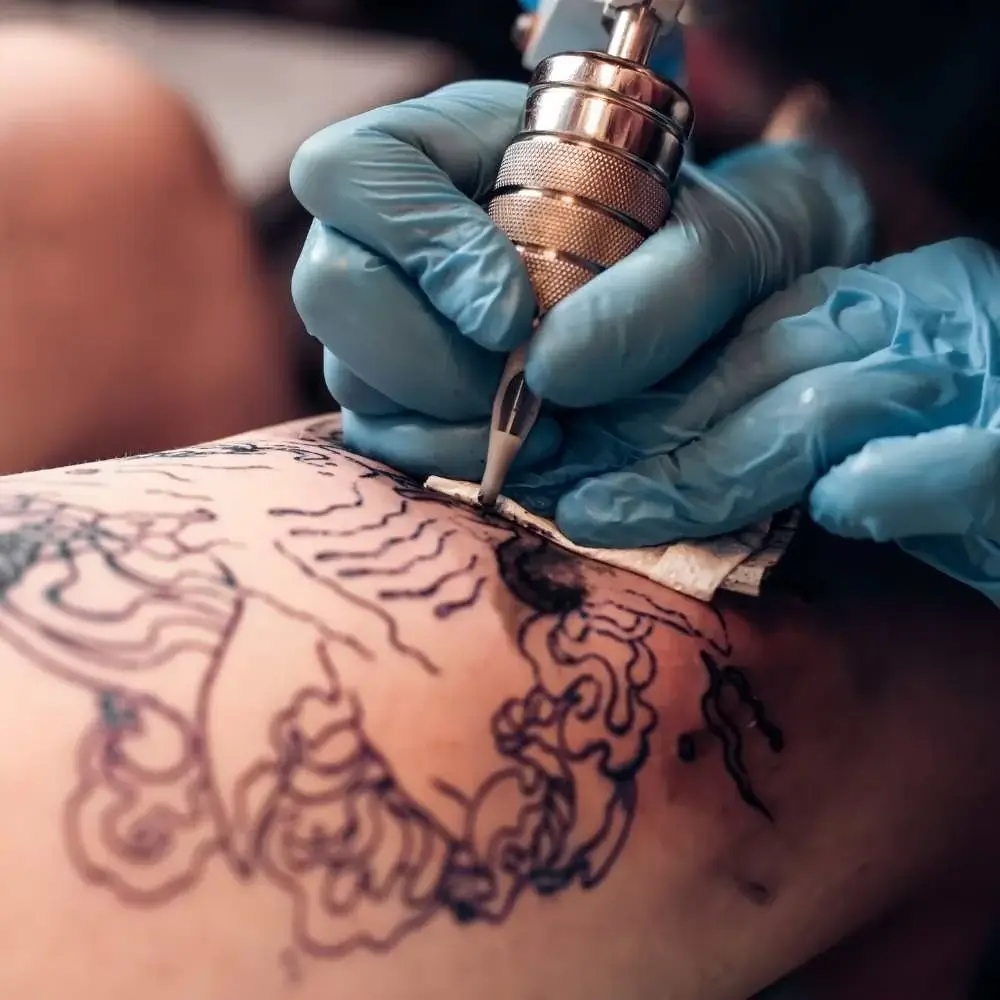Ladies and gentlemen, step right up and prepare to uncover the secrets of the tattooing world! Ever wished for a magical elixir to ease the pain while getting inked? Well, hang on to your hats because numbing cream before tattooing might just be your ticket to a pain-free paradise!
Our delightful journey will take us through a landscape filled with quirky facts, interesting anecdotes, and a pinch of humor, all set to make your trip as entertaining as possible. Ever wondered how numbing cream works? Or are you curious if it’s a boon or a bane? Don’t worry, we've got you covered.
In our enchanted tour, we'll take a deep dive into the mesmerizing world of numbing creams, unmasking its superpowers and its Kryptonite alike. From its magical ingredient lidocaine to the hour-long power nap it requires to take effect, we leave no stone unturned.
But that's not all! We'll also touch upon the lesser-known twists and turns that could leave you on a roller coaster ride of sensations. Are you intrigued? Excited? A little nervous, perhaps? Well, that's the spirit! Stay with us, and we promise a fun-filled exploration that will answer all your questions and maybe even leave you wanting to get another tattoo! Ready to embark on this exciting journey? Let’s dive right in!

Tattooing Tango: The Do's and Don'ts of Dancing with Numbing Cream
Hey there, soon-to-be-inked friends! Are you all jittery about the impending tattoo session? Don't worry! Your dear friend, the 'Numbing Cream,' might just swoop in like a superhero and rescue you from the dreaded realm of pain. Let's delve into the enchanting world of numbing creams and see if this could be your perfect tattooing sidekick.
The Super-Powers of Numbing Cream
Imagine there's a masked vigilante in your body blocking the mischievous pain signals before they reach your brain. That's precisely what the numbing cream does. This magical concoction, infused mainly with the magic potion called lidocaine, lulls your skin into a peaceful slumber. So, when the tattoo needle plays its symphony, you remain blissfully unaware of the prickly notes!
You'll have to let the cream enjoy a power nap of about an hour on your skin, though. After all, even superheroes need a little rest, right? Once your skin area is numb, your tattoo artist can start their masterwork, and you'll be in your comfort zone!
Tread Carefully: Not All Superheroes Wear Capes
Just like how kryptonite is to Superman, numbing creams too have their Achilles' heel. For starters, your skin might just throw a tantrum and react to the cream itself. So, before you slather it all over your future masterpiece, make sure to do a patch test on a smaller area of your skin. It's like a rehearsal before the grand show!
Here's a plot twist though - numbing creams could turn into a sneaky villain too! They can deceive you into not feeling if your tattoo artist is penetrating too deep, possibly hitting a nerve end. The result? A tattoo session that’s a bit more painful than it would have been without the numbing cream.
So, dear friends, the numbing cream could either be your savior or a tricky opponent in your tattooing journey. It’s essential to have a heart-to-heart with your tattoo artist before inviting this superhero (or villain) to your session. And don't forget that little rehearsal (a.k.a. patch test) before the curtain rises! After all, it's better to be safe than sorry, right? Happy tattooing, folks!

How Does Numbing Cream Before Tattoo Work?
You've decided to get a tattoo, and you're ready for the ink but not the sting. Enter the numbing cream before the tattoo - a godsend for many. But what is the science behind this product? Let's peel back the layers and understand how numbing cream works.
The Magic Ingredients
Numbing creams, also known as topical anesthetics, are packed with active ingredients that do all the hard work. Common components include lidocaine, prilocaine, or benzocaine, which are all local anesthetics. They possess the ability to numb the skin area where they are applied, effectively reducing or even eliminating the pain from tattooing.
Numbing Action: A Molecular Dance
How do these ingredients achieve this feat? It's all about blocking nerve signals. When you apply numbing cream before a tattoo, the active ingredients seep into your skin. Their primary target is the dermis, the second layer of skin where your pain receptors are located.
These active ingredients play a key role in blocking sodium channels in your nerve cells. Sodium channels are pathways for electrical signals, and when blocked, they prevent the nerve cells from sending pain signals to the brain. This interruption of communication results in numbing the area.
Understanding the Body's Reaction to Pain
To understand how a numbing cream before a tattoo works, it's essential to grasp the body's response to pain. Pain, unpleasant as it may be, is a form of communication. It's the body's way of saying, "Hey, something's not right here!"
When you feel pain, it's because the nerves in the affected area are sending signals to your brain. The brain then processes these signals and identifies them as pain.
Numbing creams work by disrupting this pain pathway. When applied to the skin, the cream blocks the nerve signals from reaching the brain. As a result, you don't feel the pain, even as the tattoo needle pierces your skin.
The Journey From Tube to Skin
The process begins when you apply the numbing cream to the area where you plan to get tattooed. The cream's active ingredients start to permeate the skin's surface, making their way towards the dermis.
The goal of this journey is to reach the nerve cells in the dermis. Once the active ingredients of the numbing cream reach the nerve cells, they block the sodium channels and disrupt the nerve signals, which prevents you from feeling the pain of the tattoo needle.
In essence, the numbing cream before the tattoo acts as a barrier between the painful stimulus (the tattoo needle) and your brain's recognition of pain. It doesn't make you insensitive to all feelings, but it does effectively reduce the discomfort associated with tattooing.
Understanding how numbing cream works before a tattoo can make the entire process seem less intimidating. With the right product, the prospect of pain can become a minor detail in the exhilarating journey of getting a new tattoo.

How To Apply Numbing Cream Before A Tattoo
The correct application of numbing cream can significantly alter your tattooing experience. Here’s a simple, step-by-step process to make your tattoo session more comfortable.
Step 1: Clean the Area
Before applying the numbing cream before tattoo, ensure the area of your skin where the tattoo will be done is clean. Use a mild, non-alcoholic cleanser for this purpose. Pat the area dry gently with a clean towel.
Step 2: Apply the Numbing Cream
Apply a generous amount of numbing cream on the area. Do not rub it in completely. It should look like a thick layer of cream sitting on top of your skin.
Step 3: Cover it Up
Next, you'll want to cover the cream-covered area with a plastic wrap. This process, known as occlusion, helps the skin absorb the numbing cream better.
Step 4: Wait and Wipe
You should leave the numbing cream before tattoo on your skin for a minimum of one hour. However, the exact duration can vary based on the product’s instructions. After the stipulated time, you can remove the wrap and wipe off the excess cream.
Step 5: Ready for the Tattoo
Now, you're ready to go under the needle! Remember, always consult with your tattoo artist before applying numbing cream, as certain brands might interfere with the ink quality.
The introduction of "numbing cream before tattoo" is truly revolutionizing the tattoo industry. It offers a game-changing opportunity to experience your tattoo journey in a more comfortable and enjoyable manner.
Now, getting a tattoo doesn't need to be a test of your pain threshold. By applying numbing cream correctly, you can fully immerse yourself in the creative process of getting inked. You can focus on the artistry, the excitement, and the profound joy of seeing your dream design come alive on your skin - all minus the wince-worthy pain.
Isn't that a brilliant notion? So, next time you're planning to get a tattoo, remember to consider numbing cream in your preparation process. It might just make all the difference!

Risks and Side Effects of Using Numbing Cream for Tattoos
Before you stock up your drawer with numbing creams, let's take a moment to discuss potential risks and side effects.
Allergic Reactions
Everyone's skin is unique, like a fingerprint. And so are their reactions to different products. Some may experience an allergic reaction to the numbing cream, resulting in redness, swelling, or itchiness. While these reactions are generally mild, they can complicate the tattooing process.
Altered Skin Texture
Numbing cream can sometimes alter your skin's texture, making it either extra slippery or overly dry. Either way, it's not an ideal canvas for your tattoo artist. This could potentially lead to a less-than-perfect tattoo or even longer healing times.
False Pain Perception
Numbing cream can mask the pain, but it also eliminates the natural pain threshold. If your tattoo artist unintentionally goes too deep, you wouldn't know, and this could lead to skin damage.
Increased Risk of Overworking the Skin
With the absence of pain, it can be tempting to sit for longer sessions than your skin can typically handle, leading to the risk of overworking the skin and causing more trauma.
"Numbing cream before tattoo" can certainly be a helpful tool, especially for those with a low pain threshold or for particularly painful tattoo placements. However, it's crucial to be aware of the potential risks and side effects and to use these products wisely. It's always recommended to discuss with your tattoo artist and a healthcare professional before taking the numbing cream route.
In the world of tattoos, as in life, there's no such thing as shortcuts without risks. Whether you choose to use numbing cream or brave the traditional way, remember - every stroke of the tattoo needle is a testament to your strength and your story. Wear it proudly!

FAQs on Using Numbing Cream Before Your Tattoo Session
Will numbing cream affect a tattoo?
The short and sweet answer? It could, but it doesn't have to. It's like a surprise party – it can be a fun-filled bash or a flat-out flop, depending on the situation. Here's the scoop: If you go overboard with the numbing cream before tattoo, it could potentially turn your skin into a slippery slope or a barren desert, making it a tricky canvas for the tattoo artist. But don't let that dampen your spirits! When used wisely, and in the right amount, numbing cream can be your knight in shining armor, ensuring you can sit comfortably through your tattoo session without it affecting the final artwork. So, it's all about playing smart, my friends!
Can you use numbing cream before a tattoo?
Absolutely, you can, my ink-curious friend! Think of "numbing cream before tattoo" as your superpower shield in the epic saga of skin and ink. This cream, when applied to the skin before the tattoo needle does its dance, can help numb the area, reducing the sensation of pain. So, if you're not exactly the "bring it on, pain" type of hero, you can totally turn to a numbing cream for your tattoo adventure. However, remember every superhero tale comes with a warning. Be sure to test it first to avoid any skin reactions, and chat with your trusted tattoo artist or a healthcare pro to ensure you're using it correctly. Now, off you go, ready to conquer the world of tattoos, one numbing cream application at a time!
Do tattoo artists care if you use numbing cream?
Here's the scoop: Most tattoo artists are cool cats about it - after all, they're in the business of creating art, not causing discomfort. But, like your favorite pickles on a cheeseburger, it can sometimes add a tricky twist. Numbing cream can make the skin a bit more slippery or, in some cases, too dry. It's like trying to draw on a water slide or in the Sahara desert. Challenging, isn't it? That said, if you're open about your "numbing cream before tattoo" strategy and chat it out beforehand, most artists are likely to don their superhero capes and work with you to create that tattoo masterpiece you've been dreaming of. Just remember, honesty is the best policy!
How can I make my tattoo less painful?
First, we all know the mantra, "Health is Wealth", right? Well, it applies here too! Being well-rested, well-hydrated, and having a good meal before your appointment sets up your body to better handle the tattooing process. Avoid alcohol or caffeine, as they can increase your sensitivity to pain.
Second, opt for loose and comfortable clothing. Trust me, you don't want your tight jeans digging into your skin while you're trying to stay still.
Third, distractions can be your best friend. Listen to some music, engage in conversation with your tattoo artist, or bring along a stress ball to squeeze.
And finally, the secret weapon: "numbing cream before tattoo". Remember, though, every superhero comes with its own set of complications, so use it wisely, and always consult your tattoo artist before applying. Ready to dive in now? Happy inking!
Is there a painless tattoo?
You see, the tattooing process involves needles depositing ink beneath the skin's surface, so naturally, it comes with a certain level of ouch-factor. Now, could you really mute that pesky pain? That's where the "numbing cream before tattoo" comes in! This little tube of wonder, filled with active ingredients like lidocaine, sets up a roadblock for pain signals on their way to the brain. It's like telling the pain, "You shall not pass!" and creating a kind of bubble wrap around your soon-to-be-tattooed skin. So while there might not be a truly painless tattoo (unless you dream of getting inked in your sleep), with a good numbing cream, you could definitely take a pretty scenic route around the pain town! But remember kids, always consult with your tattoo artist and healthcare provider before diving into the numbing cream bandwagon.
Read our article about best deer makeup look here!
Check out our article on the best matte lipstick here!
Read our article about best shampoo and conditioner for 4c hair here!







